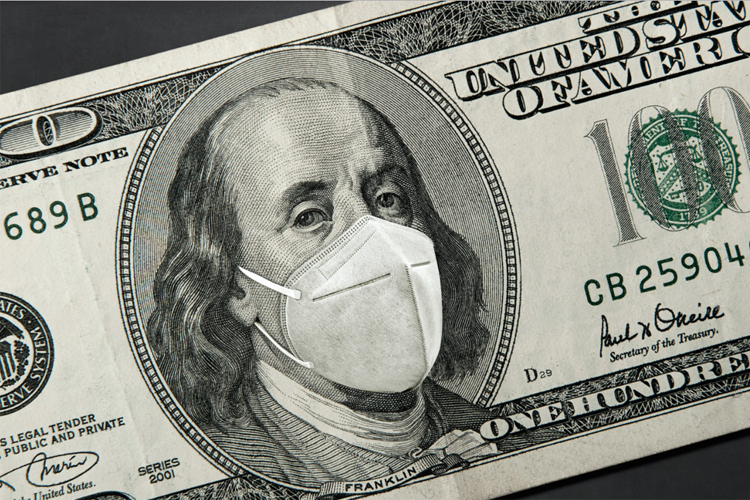
The Coronavirus Aid, Relief, and Economic Security (CARES) Act is the largest aid package in U.S. history. The bipartisan deal allocates $2 trillion in relief efforts to mitigate the crisis resulting from the COVID-19 pandemic. This includes $500 billion in loans – $454 billion of which was allocated to the Federal Reserve for additional lending. The CARES Act, and its disaster relief programs, has caused great upset among lawmakers and small business owners. They’ve been inundated with complaints about breakdowns in the small-business lending program and loopholes that have allowed large companies to receive funds meant for smaller operations. Lawmakers are now looking for solutions to the mounting legislative shortcomings.
The day after lawmakers spoke with the head of the Small Business Administration about the issues with the small business program, Congress passed another huge relief bill with little done to address the early problems that have emerged. Many have speculated that decisions are influenced by lawmakers’ desire to be favored in November elections. They will be perceived negatively if their solutions to the pandemic are unsuccessful or driven by powerful interests. These factors are increasing the urgency to fix what isn’t working. Here’s a look at the growing breakdowns of rescue efforts and the consequences for small businesses thus far.
The $350 billion fund for small businesses was quickly depleted and it became apparent that large, publicly traded companies had received much of the funds. Lawmakers and the public were outraged by this injustice. Similarly, many have been frustrated over the cost of provisions in the stimulus plan, allowing wealthy business owners to take advantage of the program by qualifying for tax refunds.
Additionally, many small business owners have had difficulty obtaining the approved loan funds or getting approved through major banks. “Promises were made in the CARES Act that made small businesses believe they would receive their loans in a timely fashion,” Rep. Pete Stauber (R-Minn.) says, “Instead, some received a fraction of what they were promised and many others received nothing at all.”
And there might be even more delays coming, though Congress sent another $320 billion into the so-called Paycheck Protection Program last week. Banks warn the money could run out in a matter of days with hundreds of thousands of applications still pending.
To delve deeper into the specifics, about 70% of U.S. small business owners have already applied for emergency loans, according to an industry survey released Thursday. A report by the trade group says the program, largely operated by banks, and a second operated by the SBA to provide immediate cash while struggling businesses wait on loan approvals, “have yet to deliver the loans, frustrating small business owners who are in immediate need of financial support.” The survey found that just over half of small businesses have applied for the SBA’s smaller disaster loan program but that just 4% had been approved. The survey reinforces the concerns of banks and small-business owners that the $349 billion Congress set aside for the Paycheck Protection Program will quickly be exhausted. The path forward for additional federal intervention is uncertain as the virus continues to wreak havoc on the economy.
Sen. Marco Rubio (R-Fla) said on Twitter “…#PPP will stop & no more #PPPloans will be made, leaving millions of #smallbusiness locked out.”
Rep. Mary Gay Scanlon (D-Pa.) echoes this sentiment saying, “Our constituents have a lot of questions about where the hell this $3 trillion is going and why it isn’t coming into their pockets,”
The federal government restarted the emergency loan program on Monday with $321 billion in funds. But the Paycheck Protection Program, first opened on April 3 with $349 billion, was a pot of money that ran out in 13 days.

Still, small businesses can’t seem to catch a break. On the first day of the reopened Paycheck Protection Program, banks reported that the Small Business Administration’s portal was not functioning and would not allow them to enter loan application information required for small businesses to access the program.
“We have been attempting to access E-Tran since 10:30 and have had no luck,” said Maria Amoruso, chief marketing officer at Pennsylvania’s NexTier Bank, in a midday message to NPR.
Amoruso said her bank had 13 small business loan applications ready on Monday morning. As of midday, her team had only been able to get one loan entered into the system.
This is yet another reason why the small business loan program has fallen short of providing desperately needed aid in a timely manner.
Rob Nichols, CEO and president of the American Bankers Association (a trade group that represents banks) tweeted out, “Our member banks across the country are deeply frustrated at their inability to access @SBAgov’s E-Tran system,” he tweeted. “We have raised these issues at the highest levels. Until they are resolved, #AmericasBanks will not be able [to] help more struggling small businesses.”
Until the multitude of issues with the roll-out of the second disaster relief package have been resolved, unfortunately, several small businesses will not receive the financial assistance they need in time to survive this economic crisis. In light of the failing system, businesses are having to look at alternative options to weather the storm.
The expert attorneys at JLG Lawyers will explain the various options available, and help to create a customized plan that can relieve or reorganize debt. To get more information about debt settlement or filing for a business bankruptcy, contact Michael Jaurigue at 818-630-7280 or info@jlglawyers.com for a free consultation today.

